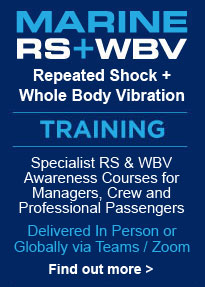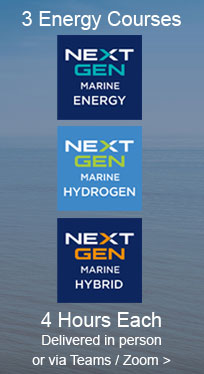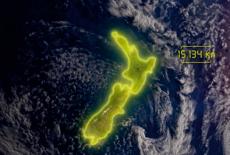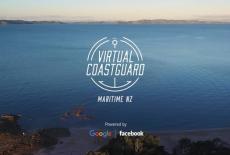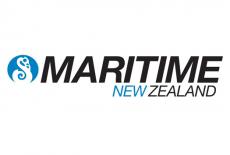Maritime New Zealand Develops Virtual Coastguard

15.06.2017

Maritime New Zealand Develops Virtual Coastguard
One thing that maritime SAR and social media have in common is the constant need to develop through innovation and technology.
In a world-first digital campaign, New Zealand’s government maritime agency, Maritime New Zealand, has partnered with Google and Facebook to create "Virtual Coastguard", a maritime safety initiative that geo-fences an entire country.
A geo-fence is a zone of coordinates that any smartphone's GPS can read. Maritime NZ's stretches 15 kilometres (9.5 miles) out from every coastline in the country, ensuring anyone setting out on the water will pass through on it.
The idea behind the campaign was to deliver a safety message to boaters and water users to get their lifejacket on as close to the time as they were going boating as possible – in this case while out on the water.
All boaters had to do was have their mobile and GPS on; and when they crossed the digital geo-fence around New Zealand’s coastline, a lifejacket advert was pushed out automatically reminding them to ‘Get it on or it’s no good’. The other way they received the life-saving prompt was through accessing a marine weather mobile app.
This free app has been downloaded more than 120,000 times and is now used more than 236,000 times a month. Maritime NZ lifejacket and safety messages are delivered through the app 760,000 times a month.
Maritime NZ’s communications manager Pania Shingleton said, ‘Over 3 million lifesaving adverts were delivered through Virtual Coastguard last summer. The campaign boosted click through engagement to our website up to 700% more than when land-based prompts were used. Last summer there were only 4 boating fatalities, down from 20.’
Ms. Shingleton added, ‘More than one in three New Zealanders get out on the water. We are a boating nation with a small 4.5 million population, using about 960,000 recreational craft and having a huge 15,000 kilometre (9500 mile) coastline. On average about 17 boaters die each year in New Zealand.’
So far, this use of the new digital initiative and the weather app has meant that boaters around New Zealand’s coastline have received more than 21.9 million messages while they are either going on the water, or checking a marine weather forecast. Every one of those message reminds them to ‘wear your lifejacket’.
"Virtual Coastguard" is an initiative by Maritime NZ supported by its safety partners Coastguard NZ and the NZ Safer Boating Forum. Virtual Coastguard has sparked interest among boating safety organisations all over the world. Maritime NZ is happy for others to take up this idea and build their own geo-fence systems.
See Virtual Coastguard Video >
Maritime NZ is the national regulatory, compliance and response agency for the safety, security and environmental protection of coastal and inland waterways.
Maritime NZ Has 3 Key Roles:
1. Regulation and compliance
Maritime NZ helps to develop and maintain the national safety, security and environmental protection regulations that govern the operation of vessels, ports and offshore installations in New Zealand waters. Maritime NZ supports, encourages and requires operator compliance with those regulations by:
licensing and certifying seafarers and commercial operations
educating the maritime community
auditing operators and service providers such as ship surveyors
investigating incidents to try to stop them happening again
enforcing the regulations to hold people to account for their actions.
2. Provision of maritime safety infrastructure
Maritime NZ maintains New Zealand’s coastal navigation aids to shipping (principally coastal lights), the national maritime distress and safety radio service, and an emergency locator beacon detection network for land, sea and air.
3. Response to incidents
Maritime NZ provides a national land, sea and air search and rescue coordination service. Maritime NZ also manages the development and improvement of national maritime incident and oil spill response capability, and lead New Zealand’s responses to significant maritime incidents and emergencies, including oil spills.
MNZ History
Established in 1862, the Marine Board of New Zealand was one of New Zealand’s first government agencies. It was set up to collect levies to pay for the construction of lighthouses. By 1900 27 manned lighthouses operated around New Zealand.
The Marine Board was disestablished and replaced by the Marine Department in 1866.
In 1972 the Marine Department was absorbed into the Ministry of Transport as the Marine Division. Following government restructuring in 1988 it became the Maritime Transport Division, although still within the Ministry of Transport.
In 1993 the Maritime Safety Authority (MSA) was established as a Crown authority in its own right, replacing the Ministry of Transport’s Maritime Transport Division. The MSA’s establishment was part of a Transport Law Reform Bill which addressed the full range of New Zealand’s maritime laws and provided the first major reform of shipping legislation in almost 40 years.
The Maritime Safety Authority was responsible for administering the new Maritime Transport Act 1994 when it came into force in February 1995. This act affirmed the MSA’s role as the organisation responsible for developing and upholding national standards and regulations for ship safety in New Zealand. On 1 July 2005 the Maritime Safety Authority was renamed Maritime New Zealand, to reflect the organisation’s wider roles of maritime safety, security and marine environment protection.
MNZ Today
Maritime NZ are continuing to develop their role. Efforts to become more evidence-based, risk-focused and intelligence-led, help to ensure relevance and success as a regulatory, compliance and response agency.
While the structure, responsibilities and name have changed many times in the last 150 years, the role of helping to keep mariners safe has always been the priority.
All images are copyright Hybrid Marine Power 2024 unless otherwise stated.
This does not exclude the owner's assertion of copyright over the material.
eNews
15.04.2024
MariNH3 Conference 2024
MariNH3 Conference 2024 is being held at Grand Plaza Hotel,…
eArticle
06.10.2023
Challenges of Unpredictable Marine Energy
From running Energy Transition training for significant maritime organisations technology…
Video
Round The World solar boat Turanor PlanetSolar
MS Tûranor PlanetSolar is the largest solar boat in the world. This 35 metre (115 feet) catamaran operates solely on…






